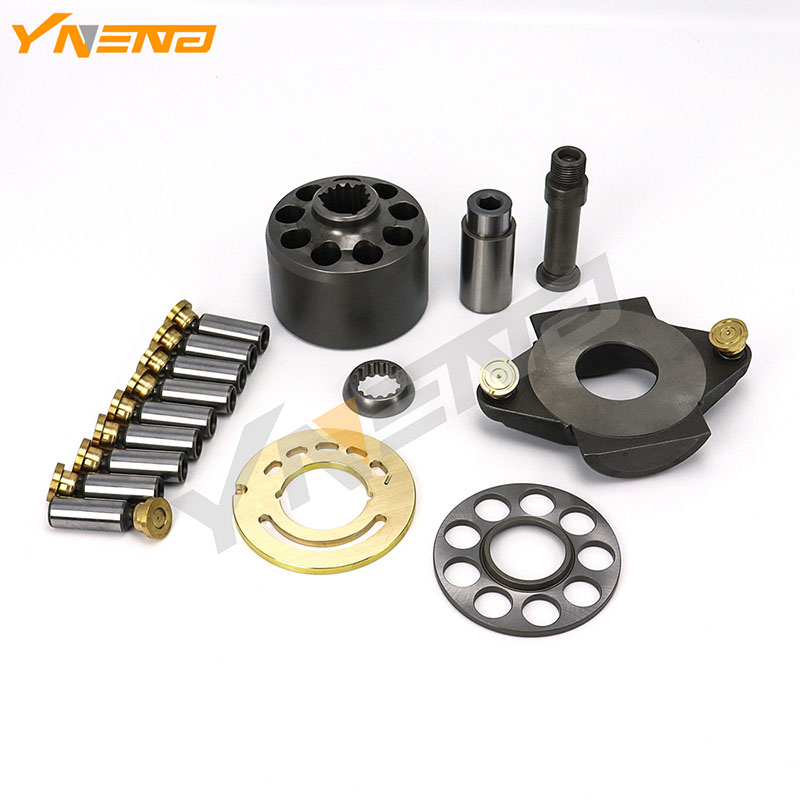Hydraulic Pump Parts: Essential Components for Efficient Operation
2025-03-18
Hydraulic pumps are crucial components in various industries, including construction, manufacturing, agriculture, and automotive. They provide the necessary power for hydraulic systems, converting mechanical energy into hydraulic energy. However, just like any machine, a hydraulic pump relies on a series of intricate parts to function efficiently. Understanding these parts is essential for maintaining and optimizing the performance of your hydraulic pump.
In this blog, we’ll explore the different parts of a hydraulic pump, their functions, and why they are vital for the overall system’s success.
What is a Hydraulic Pump?
A hydraulic pump is a mechanical device that converts mechanical energy into hydraulic energy. It achieves this by moving hydraulic fluid through a system, which then powers various machinery. Hydraulic pumps are integral to hydraulic systems, providing the pressure required to move fluid through hoses, pipes, and actuators.
Key Hydraulic Pump Parts and Their Functions
Hydraulic pumps are made up of several components, each playing a vital role in ensuring smooth operation. Let's take a closer look at these parts:
1. Pump Housing
The pump housing is the outer shell of the hydraulic pump, typically made from durable materials such as cast iron or steel. It encases all the internal components of the pump and provides protection against external elements like dust, dirt, and moisture. The housing also contains mounting points that allow the pump to be securely attached to the hydraulic system.
Function: The housing provides structural support for the pump, helping it maintain its integrity while withstanding high-pressure environments.
2. Pump Shaft
The pump shaft is the central component that transfers mechanical energy from an engine or motor to the hydraulic pump. It is connected to the motor and typically made from high-strength steel to handle the rotational forces generated by the motor.
Function: The pump shaft transmits the motor’s power to the internal components of the pump, driving the pump’s operation.
3. Impeller/Rotary Group
The impeller or rotary group is the heart of the hydraulic pump. It consists of rotating blades or vanes that draw in hydraulic fluid and push it through the pump. In some pump designs, the impeller is directly connected to the pump shaft.
Function: The impeller creates the pressure differential necessary to move the fluid through the pump. As it rotates, it increases the fluid’s velocity and pressure, allowing the hydraulic system to perform its work.
4. Valves
Hydraulic pumps often include different types of valves, including check valves, relief valves, and control valves. These valves regulate the flow, pressure, and direction of the hydraulic fluid.
- Check Valve: Prevents fluid from flowing in the wrong direction.
- Relief Valve: Limits the system pressure by allowing fluid to flow back to the reservoir if the pressure exceeds a certain threshold.
- Control Valve: Directs the flow of fluid to the appropriate parts of the hydraulic system.
Function: The valves control the pressure and direction of the hydraulic fluid, ensuring the pump operates within the desired parameters.
5. Seals and O-Rings
Seals and O-rings are essential components that prevent hydraulic fluid from leaking out of the pump. These seals are typically made of rubber or synthetic materials and are positioned in various parts of the pump, such as around the shaft, housing, and connections.
Function: Seals and O-rings maintain the integrity of the hydraulic pump by preventing leakage and ensuring that the pump operates efficiently without losing pressure.
6. Bearing
Bearings are used to reduce friction and support the rotating parts of the hydraulic pump, such as the pump shaft and impeller. They are crucial for ensuring smooth rotation and preventing premature wear of components.
Function: Bearings minimize friction, reduce wear, and allow smooth, efficient operation of the hydraulic pump.
7. Suction and Discharge Ports
The suction and discharge ports are openings through which hydraulic fluid enters and exits the pump. These ports are typically located on the pump housing and are designed to connect the pump to the rest of the hydraulic system.
Function: The suction port draws in hydraulic fluid, while the discharge port pushes the pressurized fluid into the hydraulic system, enabling various components to operate.
8. Reservoir and Filter
While not technically a part of the hydraulic pump itself, the hydraulic reservoir and filter are integral to the pump’s operation. The reservoir holds the hydraulic fluid, while the filter ensures that the fluid is clean and free from contaminants that could damage the pump and other components.
Function: The reservoir stores hydraulic fluid, and the filter ensures the fluid remains clean and free of particles that could cause system failures.
Why are Hydraulic Pump Parts Important?
Each part of a hydraulic pump plays a crucial role in ensuring that the pump functions efficiently and reliably. The combination of high-quality parts, proper assembly, and regular maintenance can extend the lifespan of a hydraulic pump, reduce the need for repairs, and prevent costly downtime. Below are a few reasons why hydraulic pump parts are so important:
1. Efficiency and Performance
The quality and condition of each part directly impact the efficiency and performance of the hydraulic pump. For instance, worn-out seals or damaged bearings can cause the pump to lose pressure, which can lead to poor system performance. Keeping all components in good working order ensures that the hydraulic system operates at optimal efficiency.
2. Durability and Reliability
Hydraulic pumps are often used in demanding environments where reliability is critical. Parts such as bearings, seals, and valves must be durable enough to handle high pressures and extended use. High-quality parts ensure that the pump continues to perform reliably over time, even in harsh conditions.
3. Preventing Breakdowns and Downtime
A failure in any part of the hydraulic pump can lead to breakdowns and costly downtime. By regularly inspecting and maintaining the pump’s parts, it is possible to identify and address potential issues before they lead to failure. Replacing worn or damaged parts promptly can prevent major problems and keep the system running smoothly.
4. Cost Savings
By investing in high-quality parts and maintaining them properly, companies can avoid the cost of frequent repairs and replacements. This not only saves money in the long run but also improves the overall return on investment (ROI) of the hydraulic system.
Conclusion
Hydraulic pumps are essential to the functioning of many industries, and the performance of these pumps heavily depends on the quality and condition of their parts. From the housing and impeller to the seals, bearings, and valves, each component has a specific function that contributes to the overall efficiency of the pump.
To ensure your hydraulic pump operates at peak performance, it is important to choose high-quality parts and prioritize regular maintenance. This will help prolong the life of your pump, reduce downtime, and maintain the efficiency of your hydraulic systems for years to come. Whether you are working in construction, manufacturing, or agriculture, understanding the key parts of a hydraulic pump will help you make informed decisions about maintenance and repair.



